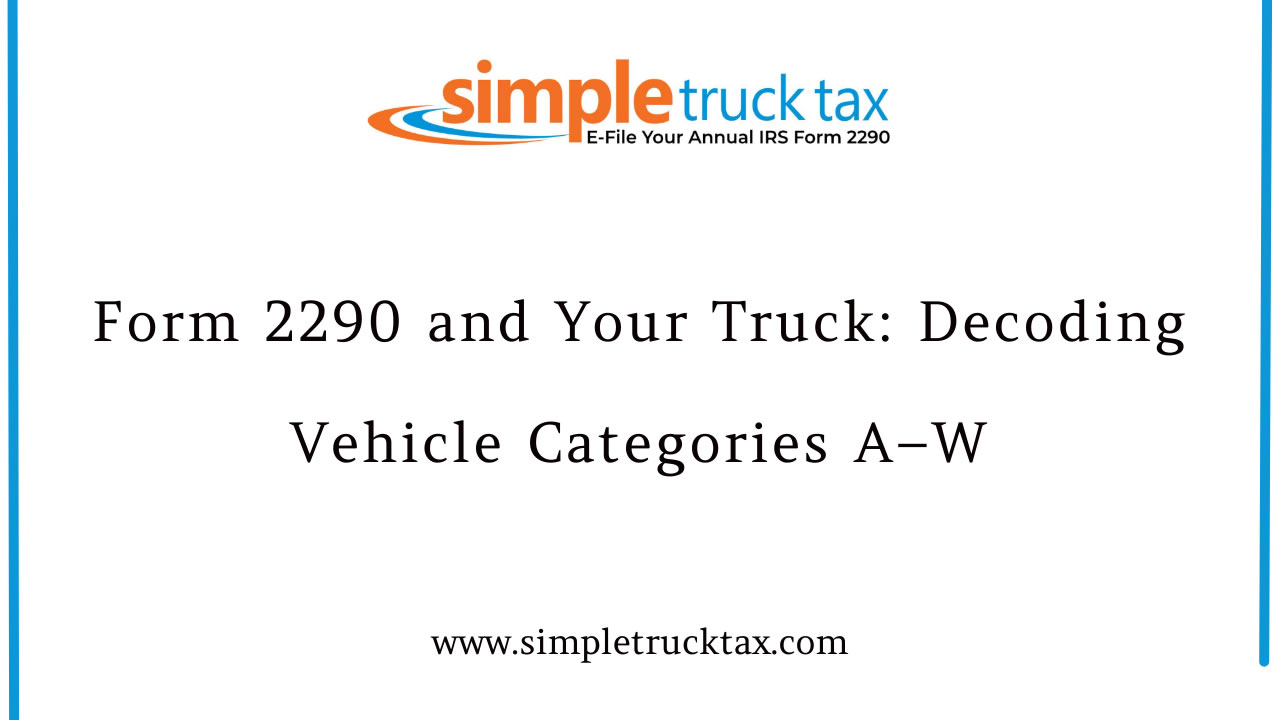
Form 2290 and Your Truck: Decoding Vehicle Categories A–W
Truck owners often have trouble with one detail of Form 2290: your vehicle category. The IRS has categories from A to W based on a truck’s weight and its utility, which determines the tax owed. If you have always wanted to know what these letters stand for, read along.
Comprehending Vehicle Category for IRS Taxation
Your truck has a defined vehicle category based on the gross weight that is assessable. The truck, any trailers it pulls, and the maximum load it could carry comprise this weight. The IRS imposes a tax on heavy vehicles starting from 55,000 pounds, and the tax scales with additional weight.
However, the IRS does impose taxes on heavy vehicles starting from 55,000 pounds and increases the tax with additional weight.
Categories initiate from A, which encompasses vehicles from 55,000 lbs, to V, which is for trucks above 75,000 lbs. Heavier vehicles incur an added annual HVUT (Heavy Vehicle Use Tax), making the tax more significant.
So What Do The Categories A to V Represent?
As with other regions in the U.S., each letter depicts an increase of 1,000 pounds in gross weight. For instance, Category A is for 55,000 lbs and so forth—B is for 56,000 lbs and trucks in the highest weight category (over 75,000 lbs) fall under category V and pay the maximum HVUT of $550 per year. The tax also increases with each weight bracket.
What About Category W?
Category W is meant for trucks that a little out of the norm. Unlike other commercial vehicles, these vehicles are only meant for “suspended” travel, forecasting a maximum of 5,000 miles a year for standard and 7,500 for agricultural trucks. These trucks are still required to file the Form 2290, but don’t have to pay any tax unless mile limit breaches.
Should a suspended vehicle exceed the mileage threshold during the tax year, it’s necessary to amend Form 2290 to include the tax.
Why Choosing the Right Category Matters
The correct choice of vehicle category ensures the appropriate tax amount is paid. Taxes that are underreported and overpaid are both problematic – paying by underreporting incurs a penalty while over reporting may mean paying more than is obligated.
If you are in doubt as to the gross taxable weight of your truck, you can verify it by looking at your vehicle registration papers or consulting your fleet manager or mechanic.
Knowing the category of your truck is important to correctly filing Form 2290 and it is also helpful when running a single unit or managing a fleet. Understanding where your vehicles are on the A-W scale will enable effective compliance with IRS filing requirements and minimize the risk of penalties.